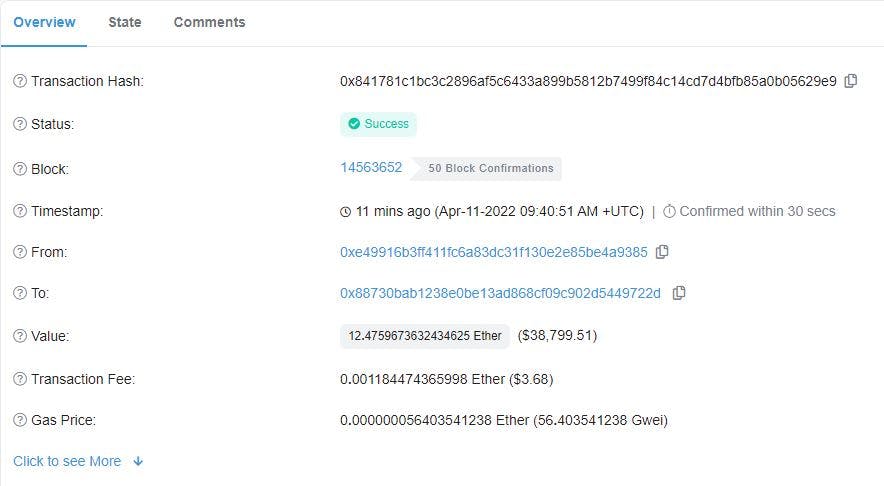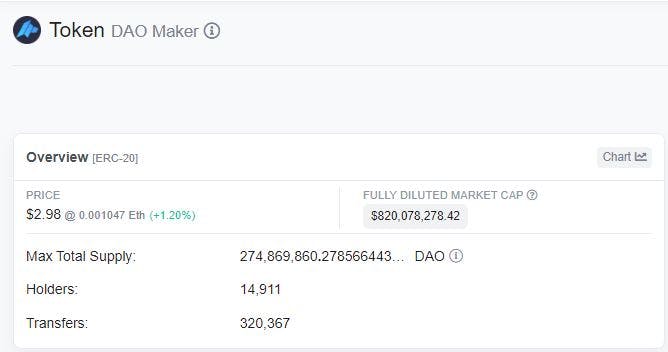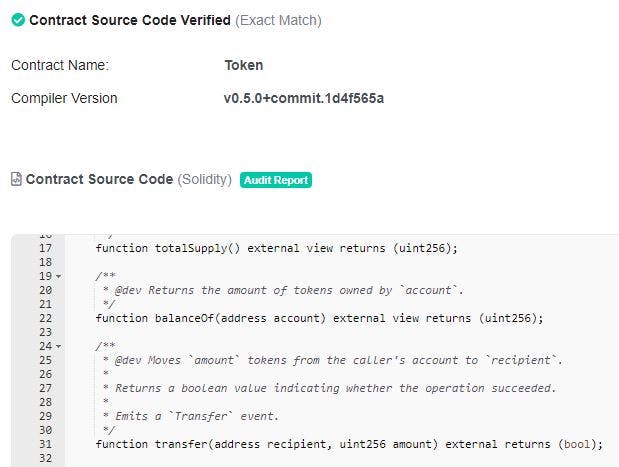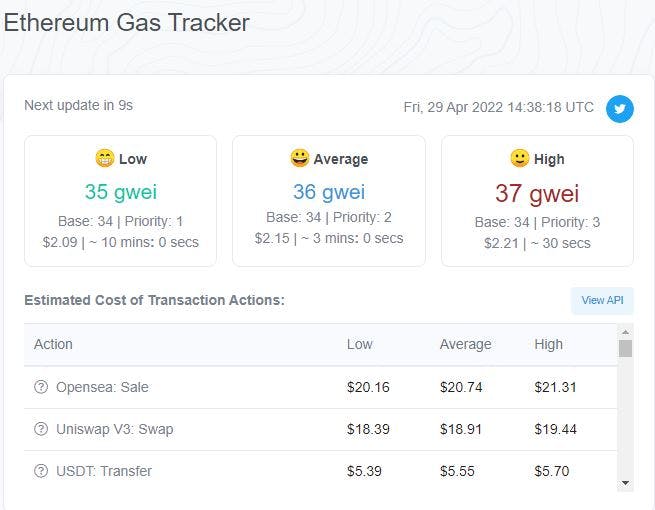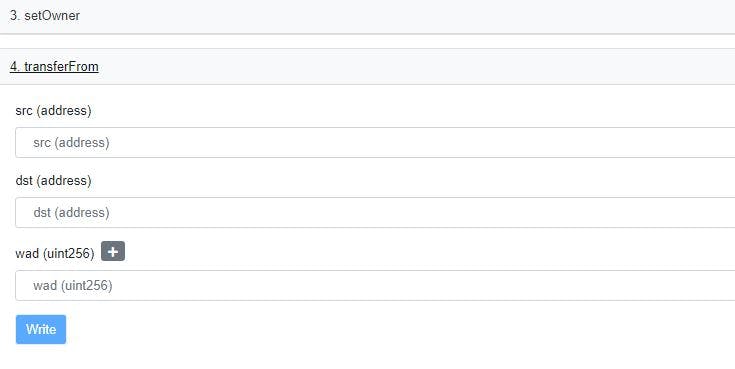What Is Etherscan And How Can You Use It?
Etherscan is a versatile blockchain explorer and analytics tool for navigating the Ethereum Network.
Table of contents
Etherscan is a blockchain explorer designed to provide users with information about the Ethereum network.
Released in 2015, Etherscan has become one of the most trusted sources of information about Ethereum.
In this article, we'll learn what is Etherscan, how it works and how it benefits its users. This guide also answers commonly asked questions about the Etherscan blockchain explorer.
ELI5: What is Etherscan?
The blockchain is similar to a database, with nodes acting as servers. Blockchain explorers like Etherscan allow you to find different pieces of information about the state of this database, i.e., the blockchain.
You can think of Etherscan as a search engine for the Ethereum blockchain. With this tool, you can track transactions, look up smart contracts, calculate gas prices, interact with decentralized applications, monitor specific wallets, and more.
Etherscan exists because data stored on the Ethereum blockchain is public. This means you can get information about smart contracts, wallet addresses, blockchain nodes, or just find general information about the Ethereum network.
Why You Should Use Etherscan
If you want to find reliable on-chain information for Ethereum, Etherscan is your best bet. There are different types of information you can find with Etherscan, some of which we explore in later sections.
Etherscan is an excellent tool for both newbies and experts. For those new to Ethereum, you can use Etherscan to inspect smart contract addresses to ensure you don't send money to the wrong place.
Seasoned investors can use Etherscan’s monitoring tools to their advantage. For example, you can track ongoing airdrops, inspect smart contracts, and set up custom alerts to track asset movements.
The last function is particularly helpful if you invest in a project. You can always know if addresses belonging to the team move a large number of tokens without warning (signaling a potential rug pull) and protect yourself.
Six Uses For Etherscan
Track Transactions And Addresses
The most basic function of Etherscan is tracking transactions. Using the transaction ID (TXID) or hash, you can find out specific information about any transactions, including those you execute.
We'll walk you through this process by inspecting a real transaction on Etherscan. Here’s a screenshot of the transaction:
Now, we’ll imagine you made this transaction. To find information about the transaction, you’ll need to copy the transaction hash below:
0x841781c1bc3c2896af5c6433a899b5812b7499f84c14cd7d4bfb85a0b05629e9
Next, head over to the Etherscan homepage and find the search bar located at the top:
Then paste the transaction hash into the Etherscan search bar and press the search button:
If you follow these instructions, you should get a page like this showing details about the transaction:
Here’s a breakdown of information on the page:
Transaction ID (Txn hash): This is the hash generated for the transaction. Hashes are alphanumeric strings unique to every transaction and cannot be altered.
Status: This shows you the state of your transaction. “Success” means your transaction went through, while “Pending” means your transaction is still processing. “Failed” means your transaction failed, which happens—especially if it ran out of gas.
Block: The specific block your transaction was included in. You can also see the number of blocks that have been added to the chain after your transaction block (“confirmations”). This information is helpful because the more blocks added after your block, the harder it is for anyone to tamper with it.
Timestamp: The time the block containing your transaction was added to the blockchain.
Address: “From” and “To” denote the sender and recipient addresses respectively. Note that Ethereum addresses can either be externally owned addresses (EOA) or contract addresses. We’ll address this concept later in the article.
Value: This denotes how much ether (ETH) was transferred in the transaction.
Transaction Fee: The amount the sender paid miners to process the transaction. This includes the miner fee and cost of gas required to execute the transaction.
Gas limit: The maximum amount of gas the sender is willing to spend on processing a transaction. Setting a gas limit is necessary so that a transaction doesn’t drain all the ether from your address.
If a transaction runs out of gas, it’ll fail—but you still have to pay a transaction fee because the miner already performed computation. On the upside, any excess gas left over from the transaction will be refunded to your account afterwards.
Gas price: This denotes the cost per unit of gas required for the transaction. Gas is the resource that fuels the Ethereum Virtual Machine (EVM) and allows it to execute transactions. Gas is measured in gwei, a subunit of ether (ETH) equal to 0.000000001 ETH.
With these steps, you can track the status of any transaction made on Ethereum. Perhaps you sent some ETH to a friend and want to make sure the transaction succeeded. If someone claims to have sent you ETH, then you can ask for the TXID and confirm the transaction yourself.
Monitor Addresses
Etherscan allows you to find information about a particular Ethereum address, such as transactions executed and assets owned. In the previous section, we used the TXID to confirm the transaction’s status. This time, we’ll use Etherscan’s address monitoring tool to find out if our friend received the money.
First, copy the recipient’s address and paste it into the search bar:
After clicking the search button, you should get a page like this showing all transactions associated with the address:

The highlighted transaction has the same hash as ours, so we know it’s the one we’re looking for. It’s marked “IN”, which means the ETH came in from another address (yours in this case). You can also check the top of the page to see the total value of ETH in the address:
Etherscan also has a Watch List feature that allows you to set up an alert for specific addresses. In other words, you’ll get notified every time that address makes or receives a transaction.
Wait, why would I want to snoop on someone else’s transactions?
Well, if the address belongs to a contract or a project or “special people” (whales, founders, exchanges, etc.), you may want to keep an eye on it.
Let’s imagine you invested in a new project, with most of the tokens kept in an address controlled by the founders. If the team moves these tokens to an exchange in a rug pull, you can quickly notice and raise the alarm.
Analyze Smart Contracts
Another cool feature is the ability to inspect smart contracts that control tokens and the dApps you interact with. This can be useful in different situations:
- Adding tokens to your wallet
To add a custom token to your wallet, you'll need the token's contract address. Fortunately, Etherscan can provide this information, along with other details like the token symbol, name, and supply.
For example, if we want to add the MakerDAO (MKR) token to a wallet, we can search for it using Etherscan’s Token Tracker feature.
Not only can we check the token's contract address, but we can also see other information like the max supply, number of holders, token price, and transfer rates. This can help you determine the legitimacy of a particular token.
- Checking smart contracts
It’s a good idea to check the smart contract of a dApp or token before committing to the project. Especially for tokens, smart contracts outline the logic of a token and control how the tokens are created, transferred, destroyed, etc. It also makes it easier to detect possible bugs before they cause extensive damage.
Here, you can see the contract overview for the MakerDAO (MKR) token, including the source code:
Etherscan also has a Verified Contracts feature that curates smart contracts with an audited, publicly viewable source code. If a smart contract is unverified, then you may want to think twice before interacting with it.
Check Gas Prices
Along with miner fees, gas costs make up the transaction fee on Ethereum. It’s important to calculate gas prices before you send out a transaction or try to interact with a smart contract:
If you set a low gas limit, your transaction will fail to complete. Worse, the transaction fee will still go to the miner since they've performed some computation already.
If you set an extremely high gas limit, it's very well possible to have your wallet drained—especially if the transaction takes a long time to finish.
With the Etherscan Gas Tracker, you can see average transaction fees for a particular period. Plus, you can even check gas prices according to the complexity of the transaction.
Etherscan gas allows you to monitor network metrics, so you can know when there's high demand for gas (which means higher prices).
That way, you can choose another time to complete your transaction.
Perform an Ethereum Name Service (ENS) Lookup
The Ethereum Name Service (ENS) is the blockchain’s answer to Domain Name Service (DNS). If you want to set up a website today, you’ll need DNS hosting. The point of DNS is to convert your IP address into human-readable text. So, instead of typing a long string of numbers, we can use easy-to-read URLs and website names.
The ENS performs a similar function, allowing us to address resources hosted on the blockchain with human-readable names.
For example, instead of giving out your wallet address each time you want to receive money, you can just use your ENS username instead.
Plus, you can use .eth domains to create censorship-resistant websites. Websites created with ENS domains run on the blockchain, which makes it difficult for anyone to take them down.
Etherscan has an ENS Lookup service that you can use to check if your desired ENS username is available. You can also see recent ENS username registrations as well as ongoing auctions for names.
Monitor Ethereum Charts and Statistics
It can be difficult to keep track of network metrics in Ethereum without using an explorer, like Etherscan. Pretty much every information you need about the Ethereum ecosystem is available.
Here are some cool Ethereum stats you can get from Etherscan:
Top Tokens
If you're looking to invest in altcoins, you might want to check them out on Etherscan first. The site has a running list of different ERC-20 tokens.
You can see the market capitalization, market price, total holders, and other important details about any ERC-20 token.
You can also check out information about non-fungible tokens (NFTs) with the Etherscan explorer. The site curates details concerning ERC-721 and ERC-1155 tokens such as:
- The token ID (contract address)
- Transaction records
- Token contract
- Total number of NFT holders
The only downside to inspecting NFTs on Etherscan is that you won't see the associated artwork. But you can easily head over to an NFT marketplace like OpenSea or Rarible for that.
Network Metrics
Etherscan can provide in-depth statistics relating to the overall performance of the Ethereum network. Here are some metrics you can track with Etherscan:
- Average daily gas prices
- Average daily transactions
- Average gas limits
- Average transaction fees
- Average gas used
- Total Beacon Chain deposits
- Geographical distributions of Ethereum nodes
Interact With Smart Contracts
Etherscan is not just useful for reading smart contracts, you can also interact with a dApp or token’s smart contract from the interface.
Before anything, you’ll need to have a browser wallet extension, like MetaMask, installed. This is because you’ll likely need to cover the costs of performing a transaction.
To interact with a smart contract on Etherscan, first, click on “Write Contract” after finding the Token Overview page.
For the next step, you’ll need to click “Connect to Web3”. This will allow you to connect a wallet like MetaMask or Binance Chain Wallet. You must make sure you have ether in the wallet to cover gas fees.
There are different actions you can perform here, but we’ll pick a simple one like transferring tokens. You can either use the transferFrom function for this purpose.
The transferFrom function allows you to send tokens from an external address to another address. In this case, a window will pop up from the wallet extension asking you to set your preferred gas price. Depending on network traffic, it could take seconds or minutes for your transaction to execute.
Interacting a smart contract directly may come in handy, especially if you’re unable to access the associated DeFi platforms or the dApp itself.
Etherscan FAQs
What is Etherscan used for?
Etherscan is a free-to-use explorer for the Ethereum blockchain. It allows you to find details about transactions, blocks, smart contracts, tokens, wallet addresses, and more.
Is Etherscan a wallet?
No, Etherscan is not a cryptocurrency wallet; neither do you need a wallet to use it. You can only search through its database to find on-chain data.
Do I need an Etherscan account?
Etherscan is free to use and doesn't require signing up for an account. However, creating an Etherscan account will give you access to extra features, such as transaction alerts and APIs.
This article is a part of the Hashnode Web3 blog, where a team of curated writers are bringing out new resources to help you discover the universe of web3. Check us out for more on NFTs, blockchains, and the decentralized future.



